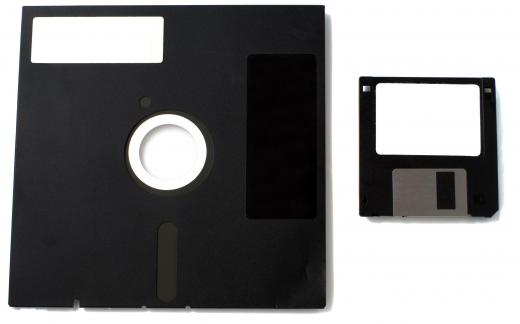At EasyTechJunkie, we're committed to delivering accurate, trustworthy information. Our expert-authored content is rigorously fact-checked and sourced from credible authorities. Discover how we uphold the highest standards in providing you with reliable knowledge.
What are CNC Machines?
Computer Numerical Control (CNC) machines are automated milling devices that make industrial components without direct human assistance. They use coded instructions that are sent to an internal computer, which allows factories to fabricate parts accurately and quickly. There are many different types of CNC machines, ranging from drills to plasma cutters, so they can be used to make a wide variety of parts. Though most are used industrially in manufacturing, there are also hobby versions of most of the machines that can be used in private homes.
Types of Machines

The most common CNC machines are milling machines, lathes, and grinders. Milling machines automatically cut materials, including metal, using a cutting spindle, which can move to different positions and depths as directed by the computer instructions. Lathes use automated tools that spin to shape material. They're commonly used to make very detailed cuts in symmetrical pieces, like cones and cylinders.

Grinders use a spinning wheel to grind down materials, and mold metal or plastic into the desired shape. They're easy to program, so they're usually used for projects that do not require the same precision as mills or lathes. Besides these, there are also CNC routers, which are used to make cuts in a variety of materials; as well as computer programmable 3D printers; and turret punches, which are used to make holes in metal or plastic. This technology can also be used with different types of cutters, including those that work with water, lasers, and plasma.
Programming and Operation

The code used to program CNC units is generically called G-Code. It contains information about where parts of the machine should be positioned, and tells the machine exactly where to place a tool. Other instructions tell the machine additional details, like the speed a part should run at; how deep it should cut, burn, or punch; and the angle of an automated tool. Most modern industrial CNC machines are tied into a network of computers, and receive operating and tooling instructions via a software file.
Advantages and Disadvantages

In an industrial setting, CNC machines can be combined into entire cells of tooling machines that can operate independently of each other. They are often driven by completely digital designs, which eliminates the need for design blueprints to be physically drawn up. Many are capable of running for several days without human intervention. In fact, some are so sophisticated that they can contact the operator’s cell phone and send an alert if a malfunction occurs. These automated features make it possible to produce thousands of parts with minimal supervision, and free the operator to perform other tasks.

Besides this, a CNC machine can form parts with a level of precision that is nearly impossible using older tools. In a conventional factory, workers must control different tools by hand, and errors are common, but a machine can perform the same task without becoming tired, and can work non-stop. This saves a lot of time, and the improved accuracy can help eliminate waste, since there are less faulty parts that have to be thrown away.
Despite their advantages, CNC machines are more expensive than older types of machines, which can make them unaffordable for smaller operations. They're also expensive to repair and maintain. Also, though they do limit the potential for errors, they don't eliminate it entirely, since operations can still program or operate the machine incorrectly. Additionally, these machines need to be operated by a skilled workforce with a specific type of training, which may not be available in all areas.
Development
CNC machines have evolved considerably since their initial introduction into the manufacturing industry. The earliest ones received code instructions through hard-wired controllers, which meant that the programming format could not be altered. Later models were programmed via mainframe cables and floppy disks, which permitted variations in programming. Modern ones can be operated by software files found on CDs, USB drives, or sent over a network.
AS FEATURED ON:
AS FEATURED ON:















Discussion Comments
This is very interesting. The technology is really, really advanced.
@Planch -- Understandable. There are several common types of CNC machines.
Perhaps the most common is a CNC milling machine. This is used to cut and shape many different materials.
CNC Lathes are used to cut metal that is spinning rapidly, like traditional lathes, but with more precision and the convenience of hands-off CNC technology.
Finally, CNC grinders use a coated wheel (again, like traditional grinders) to grind things into shape.
So essentially, the only difference between the traditional forms of these machines -- lathes, grinders, mills -- is the CNC control.
So what are some examples of CNC machines? I just can't picture what one might be, it all seems a bit abstract.
Did you know that before there were CNC machines, there were "NC" or "numerically controlled" machines?
They only were used for a brief period in the 40s and 50s, mainly by contractors working for the US Air Force, then later by tool companies.
However, when CNC came on the scene in the early 60s, NC lost prominence, and eventually became obsolete.
Post your comments